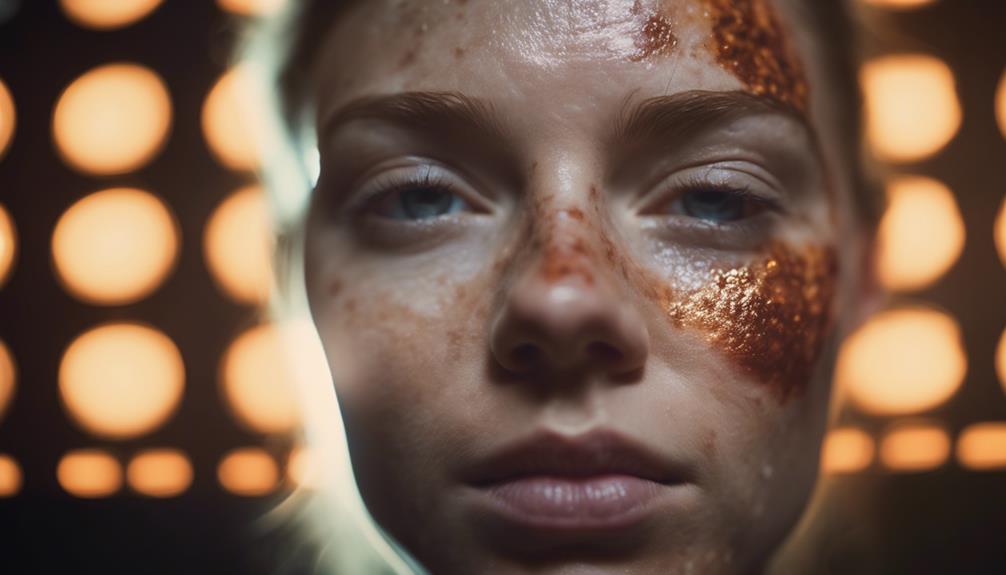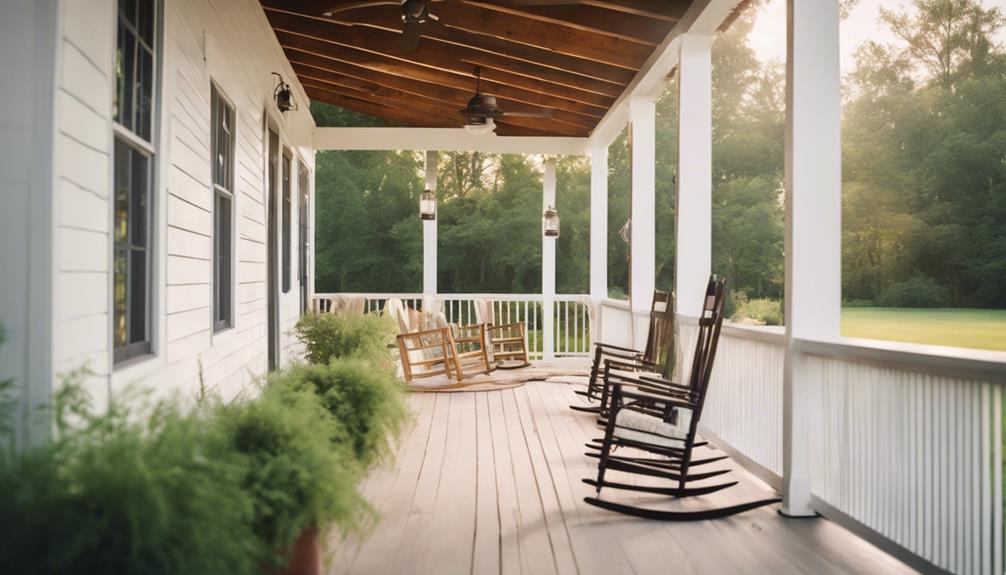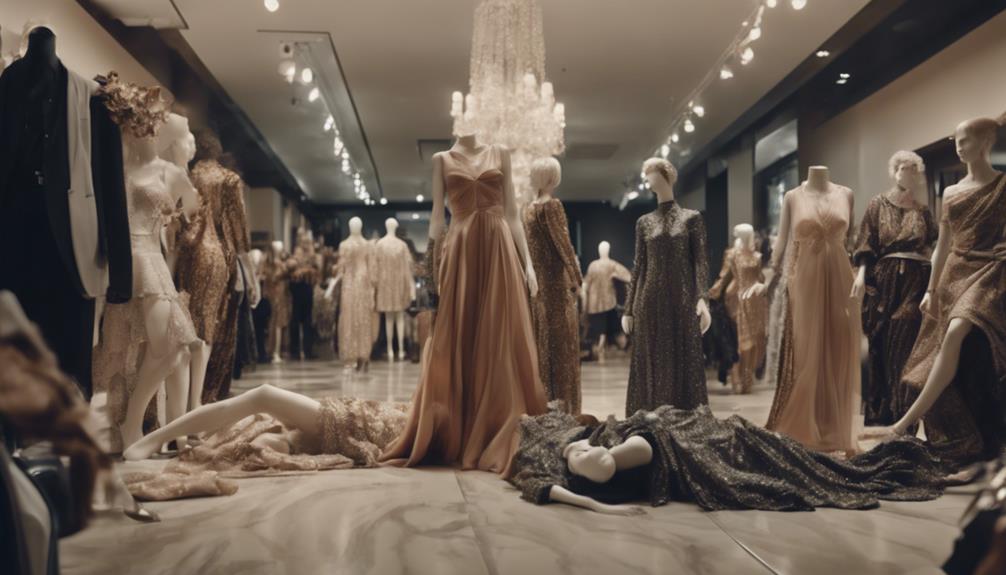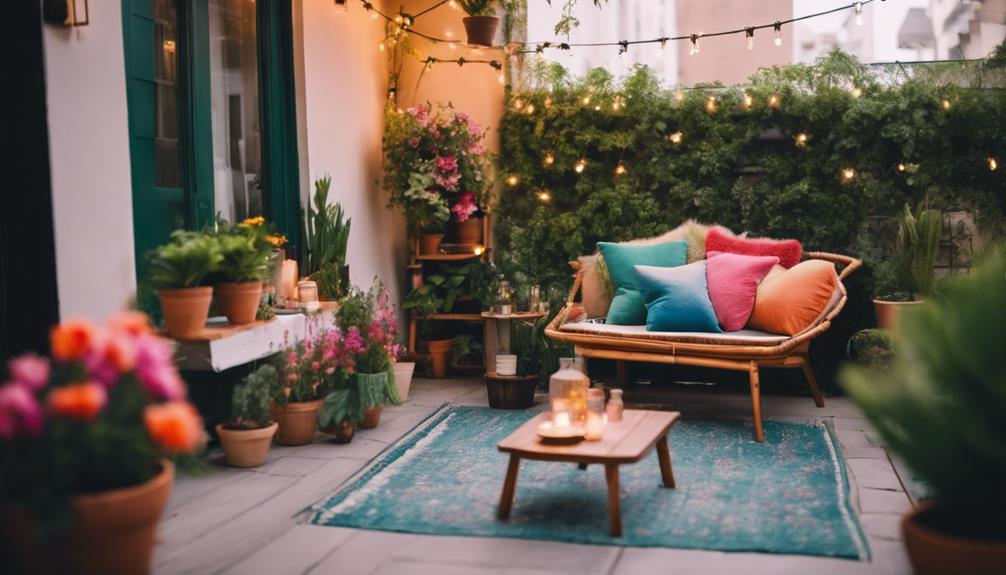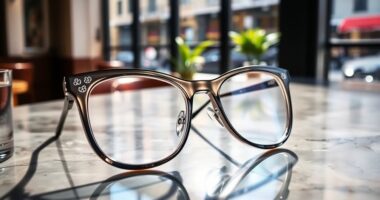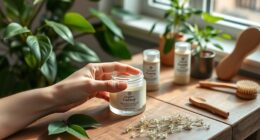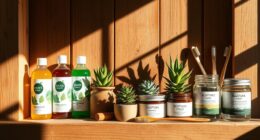Tanning beds present serious risks to your skin, increasing the likelihood of skin cancer, including melanoma. The UV rays emitted by tanning beds penetrate deeply, speeding up premature aging, leading to wrinkles, age spots, and a fatigued appearance. Additionally, without proper eye protection, you are at risk of eye injuries and long-term vision problems. There is no safe amount of tanning bed use, so it is vital to take precautions. Always use broad-spectrum sunscreen, limit your sessions, and consider safer alternatives like self-tanning products. By staying educated and proactive, you can effectively protect your skin—explore more tips to safeguard your skin in the following sections. It is also crucial to understand the hidden health risks of tanning beds, such as potential immune system weakening and the development of cataracts. The American Academy of Dermatology strongly recommends against using tanning beds due to their link to an increased risk of skin cancer. It is essential to prioritize your skin’s health and be mindful of the dangers associated with tanning beds.
Key Takeaways
- Tanning beds significantly increase the risk of skin cancers, including melanoma, especially with early and regular use.
- UV radiation from tanning beds is more intense than natural sunlight, posing serious health risks.
- Lack of eye protection during tanning can lead to severe eye injuries and long-term vision problems.
- Indoor tanning accelerates skin aging, resulting in premature wrinkles and age spots.
Health Risks of Tanning Beds
Tanning beds pose serious health risks, as their UV radiation is a leading cause of skin cancers, including melanoma and nonmelanoma types. If you start tanning at a young age, you greatly increase your chances of developing these cancers.
Regular use of tanning beds not only heightens the risk of skin cancer but also contributes to skin lesions, which can become problematic over time. It's essential to perform regular skin checks to catch any issues early.
You might think you're getting a healthy glow, but tanning beds don't provide any Vitamin D benefits. Instead, they expose your skin to harmful rays. Being mindful of these risks can help you make better choices for your skin's health and safety.
Understanding UV Radiation
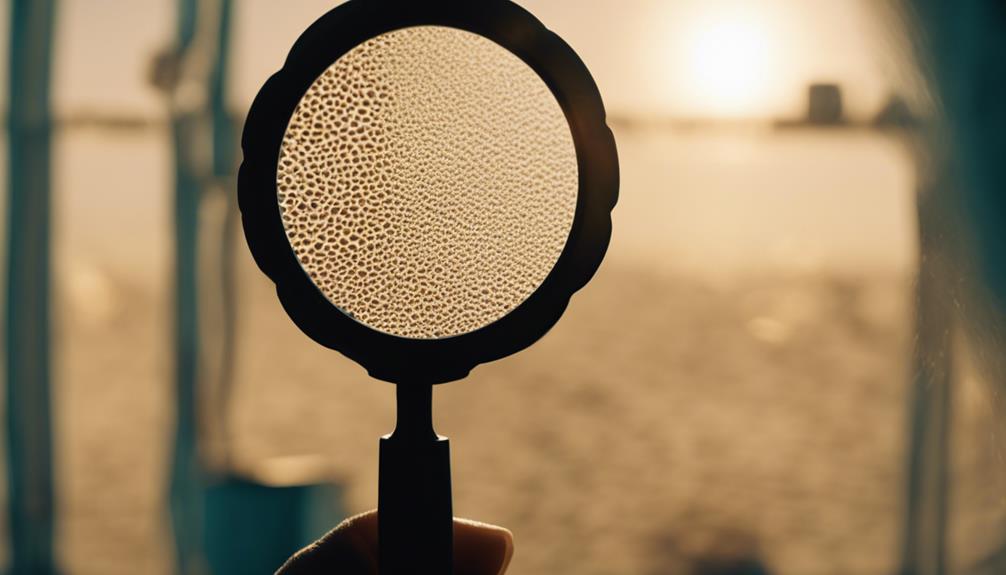
UV radiation, emitted by tanning beds, is categorized into two types: UV-A and UV-B, with UV-B being the more harmful and carcinogenic.
While UV-A rays can penetrate deep into your skin, causing premature aging, UV-B rays primarily affect the surface, leading to sunburn and increasing your risk of skin cancer.
Tanning beds emit higher levels of UV radiation than natural sunlight, making your skin more vulnerable to damage.
Understanding these differences is essential for making informed choices about tanning.
Remember, there's no safe level of tanning bed use; even occasional exposure can elevate your risk of skin issues. If you want to improve your tanning bed experience, consider using a sunless tanning product or bronzing lotion instead. These products can give you a similar, sun-kissed glow without the harmful UV exposure. Additionally, always make sure to wear protective eyewear and follow recommended usage guidelines to minimize the potential risks associated with tanning bed use. Remember, it’s important to prioritize your skin’s health and seek safe alternatives for achieving a bronzed look.
Prioritizing your skin health means staying informed about the dangers of UV radiation and seeking safer alternatives for achieving that bronzed look.
Eye Damage From Tanning
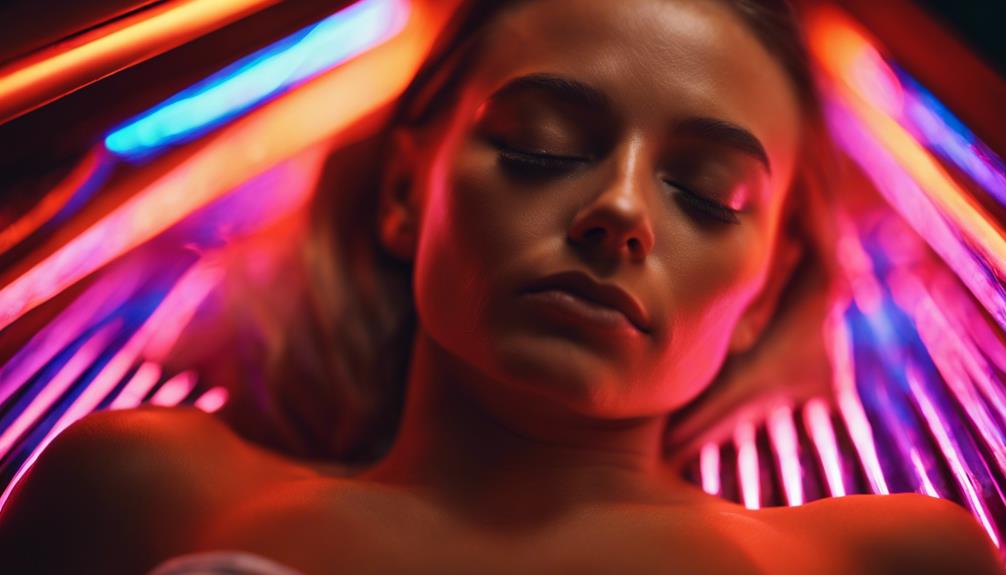
Using tanning beds without proper eye protection can lead to serious eye damage, including cornea injuries and an increased risk of cataracts.
The UV radiation emitted by tanning beds isn't just harmful to your skin; it poses significant threats to your vision as well. If you don't wear protective goggles, you could face long-term consequences like macular degeneration.
Eye safety should always be a priority when considering indoor tanning. Public health campaigns emphasize the importance of using protective eyewear to shield your eyes from harmful UV exposure.
Investing in high-quality goggles designed specifically for tanning can help safeguard your vision and reduce the risk of serious eye health issues, ensuring that your tanning experience doesn't come at the cost of your eyesight.
Premature Aging Effects
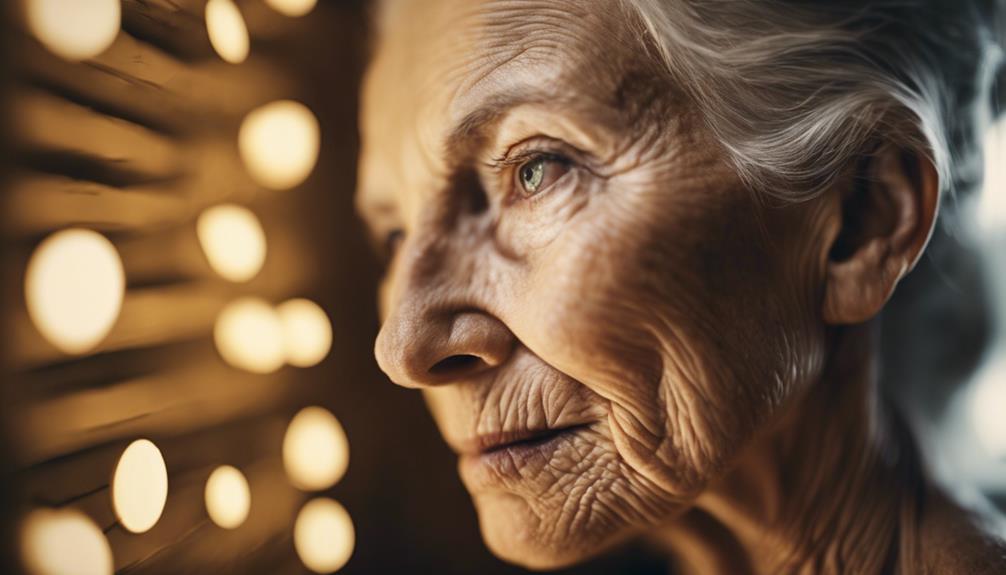
Indoor tanning can greatly accelerate skin aging, leading to early wrinkles and a leathery texture.
When you expose your skin to UV rays, they break down collagen and elastin, essential proteins that keep your skin smooth and firm. This degradation results in fine lines and loss of skin elasticity, making you appear older than you are.
Additionally, you might notice the emergence of age spots and an uneven skin tone. Existing stretch marks can also become more pronounced due to tanning.
Over time, the cumulative effects of indoor tanning can markedly alter your skin's appearance, leading to a tired and aged look.
Protecting your skin from these harmful practices is vital for maintaining a youthful complexion.
Safe Tanning Practices

To minimize skin damage while tanning, always apply a broad-spectrum SPF 30+ sunscreen before your session. This protects your skin from harmful UV rays and reduces the risk of burns.
Here are three safe tanning practices to follow:
- Limit your sessions: Cut down on the frequency and duration of your tanning sessions to avoid excessive UV exposure.
- Use protective eyewear: Always wear goggles designed for tanning beds to shield your eyes from UV damage.
- Consider alternatives: Explore self-tanning products like spray tans or lotions, which provide a bronzed look without UV exposure.
Alternatives to Indoor Tanning

Self-tanning products offer a safe way to achieve a sun-kissed glow without the harmful effects of UV exposure. You can choose from a variety of options, such as self-tanning lotions, sprays, and even wipes.
These products work by interacting with the outer layer of your skin to create a natural-looking tan. For a more instant result, consider getting a spray tan from a professional. If you prefer a gradual approach, apply a daily moisturizer with a hint of self-tanner.
Don't forget to exfoliate your skin before applying any product to guarantee an even application. With these alternatives, you can enjoy that bronzed look while keeping your skin healthy and protected from the dangers of indoor tanning.
Importance of Skin Checks

Regular skin checks are essential for spotting any early signs of skin cancer or other skin issues before they become serious. By taking just a few minutes each month, you can help protect your skin's health.
Here's what you should focus on during your checks:
- Look for New or Changing Moles: Any new spots or changes in existing moles can indicate potential problems.
- Check for Asymmetry: Moles that aren't symmetrical or have uneven borders should be examined by a professional.
- Watch for Color Changes: Moles with multiple colors or that are unusually dark can be a warning sign.
Frequently Asked Questions
Can Tanning Beds Provide Any Health Benefits at All?
Tanning beds don't offer health benefits like natural sunlight. They primarily expose you to harmful UV radiation, increasing skin cancer risks. You're better off seeking safer alternatives for skincare and vitamin D without indoor tanning.
How Quickly Can Skin Damage Occur After Indoor Tanning?
Skin damage from indoor tanning can occur within minutes, especially with high UV exposure. You might notice redness or irritation right after a session, highlighting the immediate risks associated with tanning beds and UV radiation.
What Are the Signs of Tanning Addiction?
You might notice signs of tanning addiction if you constantly seek sun exposure, feel anxious when unable to tan, or prioritize tanning over other activities. You may also experience skin damage but ignore the warnings.
Are There Safe Tanning Bed Alternatives Available?
While tanning beds promise a quick glow, safer alternatives exist. You can achieve a sun-kissed look with self-tanners, bronzers, or spray tans. Embrace these options to get the color you want without the risks.
How Often Should I Get Skin Checks After Tanning?
You should get skin checks at least once a year after tanning. If you notice any changes, like new moles or spots, don't hesitate to schedule an appointment sooner. Early detection's key to skin health.
What Are the Risks of Tanning Beds and How Can I Protect My Skin?
Many people are unaware of the hidden dangers of tanning beds. The UV radiation from these beds can increase the risk of skin cancer, premature aging, and eye damage. To protect your skin, it’s important to avoid tanning beds and opt for safer alternatives like sunless tanning lotions or spray tans.
Conclusion
In your quest for that perfect sun-kissed glow, you might just be trading your skin's health for a temporary tan.
Ironically, while you're aiming for beauty, you could be inviting skin cancers and premature aging instead.
Embracing safer alternatives can keep your skin radiant without the risks of tanning beds.
So, why not skip the harmful UV rays and choose methods that enhance your beauty for the long haul?
Your skin will thank you for it.
